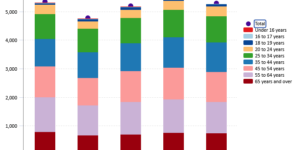Dan Akerson is pushing General Motors Co. to build cars that the U.S. automaker’s top executive hopes will attract a target demographic: his grandkids.
“I have grandchildren that have only grown up in a world with smartphones,” Akerson, a former telecommunications executive, said on a conference call on Thursday to discuss GM’s quarterly results.
An emerging generation of tech-savvy consumers has changed the way GM and its rivals approach in-car entertainment and navigation systems. If done well, these systems can draw new buyers and allow automakers to tap new sources of revenue and boost profit margins.
So far, many customers and car reviewers have complained that these so-called infotainment systems are clunky and harder to use than the phones in their pockets. Automakers have struggled to find ways to update in-car software so it does not appear outdated over the course of the car’s life.
GM says it will be able to make these updates more quickly starting with its 2015 lineup. In mid-2014, the No. 1 U.S. automaker will start selling Internet-capable vehicles that GM says allow passengers in the backseat to watch streaming video.
This feature also gives GM the chance to sell advertising within the car itself. The average American spends just over four hours a week commuting to work, according to federal data. This potentially gives advertisers a chance to promote their brands to a captive audience.
“For example, what happens if when the logo shows on your screen, it says ‘brought to you by Allstate’?” said Akerson, using Allstate Corp.’s name to illustrate GM’s options. “How many times is that going to pop? And how much can you get from Allstate?”
GM will earn $20 from each customer who signs up for the Internet service. The U.S. automaker is also beefing up its in-vehicle OnStar service, which connects drivers to live operators for directions or emergency help. GM has yet to divulge what kind of Internet and OnStar options will be available and at what price.
Citi analyst Itay Michaeli estimated that OnStar generates about $1.5 billion in annual revenue and the unit is worth between $5 billion and $7 billion as a whole.
Compared with competitors, Michaeli said in an April 14 research note, GM is “arguably better positioned to capitalize on connected global trends.”
SYNC WITH SMARTPHONES
Some analysts said GM risks alienating customers with ads in the car. But those concerns may be outweighed by the convenience of the new service, which includes access to real-time navigation and traffic information.
“People want to walk into their car and have it behave just the way the little piece of metal that fits in their pocket can do,” said Alexander Edwards, president of research firm Strategic Vision, referring to smartphones.
GM was a pioneer in in-vehicle connectivity in the 1990s with OnStar. Now, all major automakers have systems that allow drivers to avoid traffic, find directions or dictate text messages to the car while on the road.
Most of GM’s 2015 Chevrolet, Buick, GMC and Cadillac models will be embedded with 4G LTE mobile broadband, a wireless connection that allows for faster flow of data.
Developing technology is a critical way for GM, Ford Motor Co. and others to attract younger buyers and become relevant, Edwards said. The average age of buyers interested in this type of technology is 45. That is about nine years younger than the average age of new car buyers overall, he said.
“This is part of the revolution in product and innovation that Buick and Cadillac need to do to become more relevant to younger buyers,” said Edwards.
More than half of vehicle owners said their next car would “definitely” or “probably” include wireless connectivity or the ability to sync with their smartphones, according to an April 25 study by J.D. Power and Associates.
At least 40 percent of vehicles worldwide will be connected by the end of the decade, Citi’s Michaeli estimated.
GM says its upcoming changes to OnStar will allow the automaker to “make some real money” from OnStar, Akerson said. He did not quantify or give projections.
“We do want to change this from primarily a safety and security business to one that is much more feature-rich,” Akerson said of his plans for OnStar.
“We have never been properly compensated, in my opinion, having come out of this industry, in terms of what we provide to the carriers.”





















 Loss-Free Property Cat Rates Fall 5-15% as Reinsurer Appetite Grows: Guy Carpenter
Loss-Free Property Cat Rates Fall 5-15% as Reinsurer Appetite Grows: Guy Carpenter  California Vocational School CEO Charged With 23 Counts of Insurance Fraud
California Vocational School CEO Charged With 23 Counts of Insurance Fraud  Surviving the ‘Silver Tsunami’: Closing the Talent, Skills Gap in Underwriting
Surviving the ‘Silver Tsunami’: Closing the Talent, Skills Gap in Underwriting  Property and Casualty Insurance Trends for 2025
Property and Casualty Insurance Trends for 2025 




